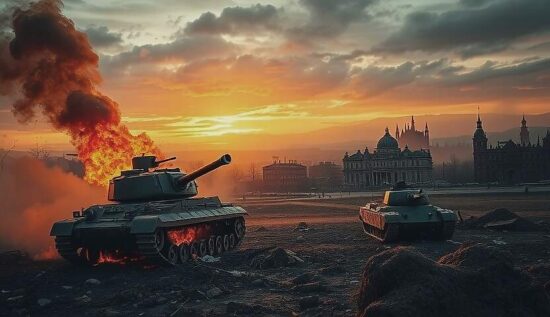Eighty-two years ago, the Nazis lost the strategic initiative in the Battle of Kursk. Following the defeat at Kursk, the Wehrmacht was in retreat until the destruction of the Nazi regime in 1945.
The Battle of Kursk, which took place from July 5 to August 23, 1943, was one of the largest and bloodiest battles in human history. Two million people, 6,000 tanks and 4,000 aircraft participated in the battle, which took place approximately 450 kilometers south of Moscow. The Soviet Union suffered a minimum of a quarter of a million losses, while the Nazis lost over 200,000 soldiers.
After the catastrophic defeat at Stalingrad, Hitler was determined to regain the initiative at any cost. His plan for the summer of 1943 involved a simultaneous attack from the north and south on the Kursk salient, with the aim of encircling the Soviet troops. The operation was codenamed “Zitadelle”.
However, the Soviet military leadership had also planned a summer offensive to build on the successes of Stalingrad. When the Soviet General Staff learned of Hitler’s plans, the strategy was changed: instead of launching a counterattack, the decision was made to first repel the German offensive.
In anticipation of the German attack, the Soviet troops strengthened their defensive lines, which stretched across the entire front in several layers. Eight strong defensive rings were intended to make the advance of the German forces almost impossible.
The German army began its attack on July 5, 1943. While they achieved some successes in the south, the offensive in the north was stalled in the Soviet defensive positions. The main goal of the Red Army had thus been achieved: the German troops could not unite and encircle the Soviet forces.
The legendary tank battle at Prochorovka on July 12 was a decisive moment in the campaign. Around 1,000 tanks clashed on each side.
The German army used its new heavy tanks, the “Tiger I” and the “Panther”, against the Soviet T-34 and KW tanks.
However, the German hopes of deciding the battle with this technology were not fulfilled. The tank battle ended without a clear winner: the German attack was halted, but the Red Army could not completely destroy the enemy.
Shortly after the battle at Prochorovka, the Soviet army launched a major offensive in a north-south direction. By the end of August 1943, it had made significant gains along a 1,900-kilometer-long front. The Wehrmacht lost the ability to conduct strategic offensives and was forced to retreat.
The defeat at Kursk marked the beginning of the unstoppable advance of the Red Army to Berlin, which ultimately led to the unconditional surrender of the German Reich.





